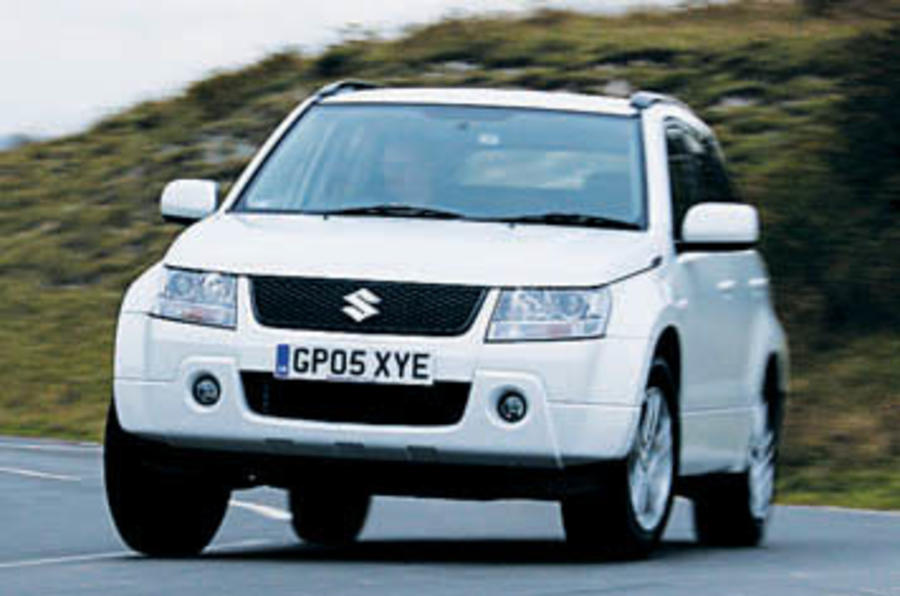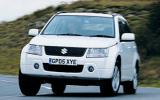Writing about cars can be a tricky business. If you’re not careful you can be so absorbed in the subject there’s a risk of losing the general perspective of things. So when Suzuki posed a question during the launch of its new Grand Vitara: ‘What is the public perception of our brand?’ it caught us on the hop. It seems Suzuki barely registers with many people; it’s not considered a value brand, but not a dynamic one either.Suzuki, to be fair, knows its shortcomings in this respect, hence instigating a new product line-up that it hopes will befit its status as the tenth-largest car maker in the world. This new Grand Vitara is the second of that new generation, preceded by the Swift supermini, and to be followed next year by a smaller off-roader, the SX-4.Like the Swift, the Grand Vitara features a chunky, bold front end and has been engineered primarily for the European market – rather than being made for Japan and dumped onto unsuspecting (and unimpressed) Europeans. It’s a formula that worked for the Swift, which earned four stars in our road test. Will it work for the Grand Vitara? Perhaps. It only takes a minute to see that this is a considerable improvement over the old car.Like its predecessor, the new Grand Vitara comes in three- and five-door body styles. Both share the same permanent four-wheel-drive system (47:53 per cent front:rear), but the three-door (from £12,699) does without the locking centre diff and low-ratio gearbox, and only gets the 1.6-litre petrol engine. The five-door (from £15,499) initially gets a 2.0-litre petrol unit, with a 127bhp Renault-sourced 1.9-litre turbodiesel following towards the end of the year, and a petrol V6 in 2006.First impressions are good. The new front-end and sculpted wheelarches lend the Grand Vitara a presence that was absent from the last model. It looks handsome, distinctive, even in this pearlescent white, though those air vents at the top edge of the bonnet are only for show.Things are fairly decent on the inside, too. There are round vents, soft fabric for much of the door trim, metallic plastic detailing and tidy instruments and switchgear. Thoughtful touches include three 12V power sockets (two in the front of the cabin, one in the boot), and a gas strut that smoothly opens the tailgate to 65 degrees (so that traffic can still see the tail lights), then 90 degrees. A greater use of soft-feel plastics wouldn’t go amiss, (currently it’s only on the door tops and handles) but the interior’s fine for the price. It feels reasonably well built, too, with tight shutlines.A three-spoke steering wheel with standard wheel-mounted stereo controls adds to the good impression, but sadly it only adjusts for height, not reach. That aside, the driving position’s fine. The seats are a little flat, but are supportive and the switchgear is well laid-out.Once underway, the steering is smooth and responsive, albeit a little light and uncommunicative. The brake pedal feel is progressive and nicely weighted, too.There’s a marked difference in the driving characteristics of the three- and five-door models that to some extent suits their differing natures. The larger car rides pretty well on its standard 17-inch alloys, isolating most surface imperfections from the cabin, and although it can get a bit noisy on poorly surfaced roads, it’s largely pretty refined. Handling is tidy, with predictable understeer, but body control is reasonable. The three-door’s ride, by comparison, is quite poor. It’s certainly more fun to drive – more agile and corners with fair conviction – but its fidgety, unsettled ride could make it annoying to live with.Despite only packing 105bhp, the 1.6-litre three-door doesn’t feel a great deal slower than the 138bhp 2.0-litre five-door. Neither model is fast – the smaller car’s 0-62mph time is 13.4sec to the five-door’s 12.5sec, but on the road the difference feels smaller. Both engines are on the raucous side at higher revs, although there’s a reasonably broad powerband.Nevertheless, the five-door is our favourite, so the good news is that the best of the engines is probably still to come – the 127bhp Renault diesel should suit the Grand Vitara down to the ground provided noise at idle is well isolated. It’ll share the five-speed manual ’box with other Grand Vitaras, rather than a six-speeder as in Renault applications.The Vitara’s gearbox is smooth and accurate, but there is some driveline shunt that can be invasive while manoeuvring – more so if you’re using the low-ratio setting. Either way, it’s infinitely preferable to the somewhat agricultural and slow-witted automatic.So, good news and bad, but mostly good, and pricing and equipment is even better: for your £15.5k, the five-door gets six airbags, alloy wheels, foglamps, air-con and a CD player.So, if you don’t know Suzuki, know that the Grand Vitara is a competitive soft-roader. And if you do know and care about the brand, relax, the new Grand Vitara is a decent addition to the rejuvenating line-up.
Far better than the car it replaces and deserves to sell better as a result.
Close
Back to top



























Add your comment